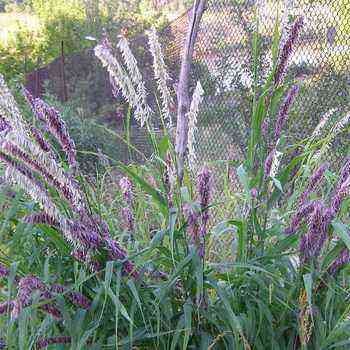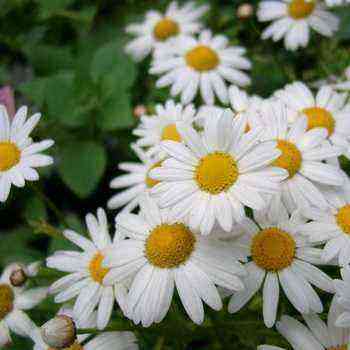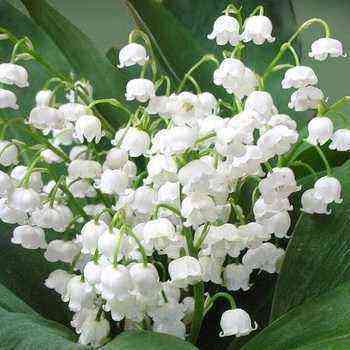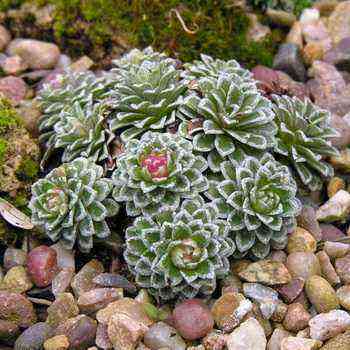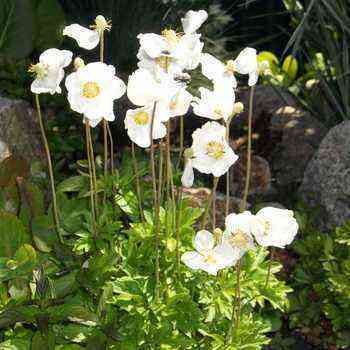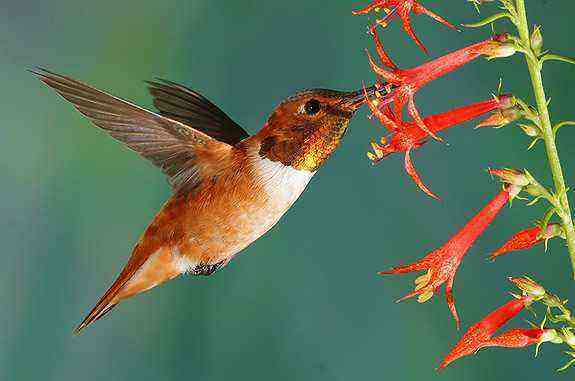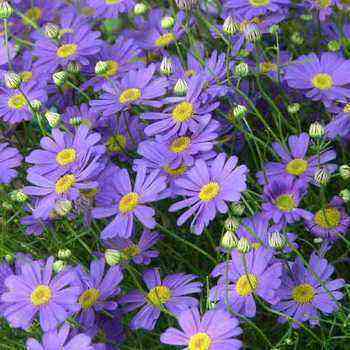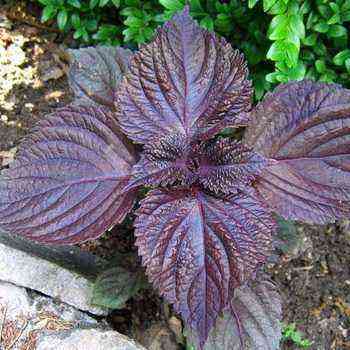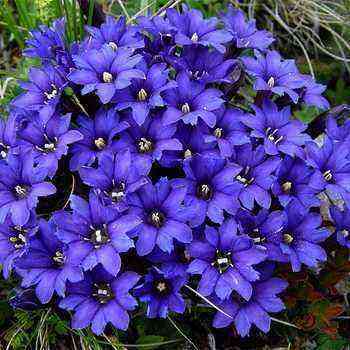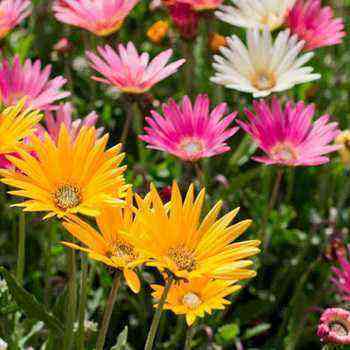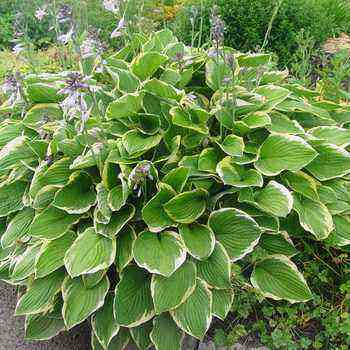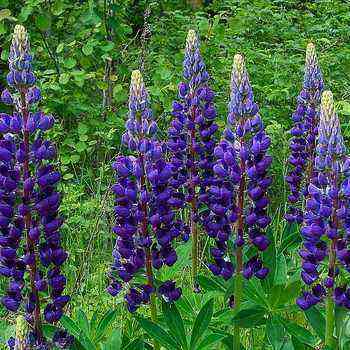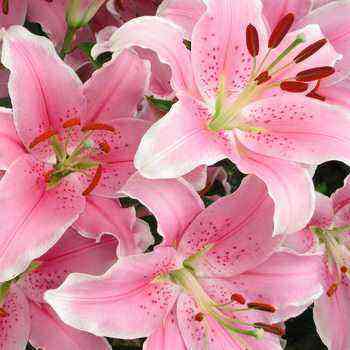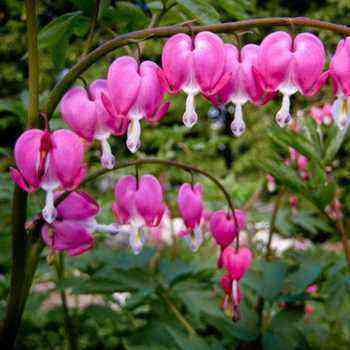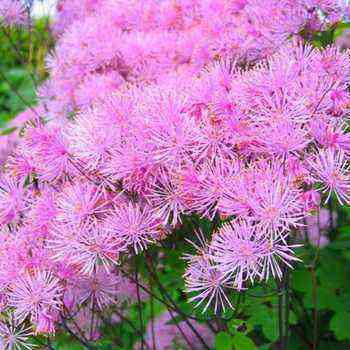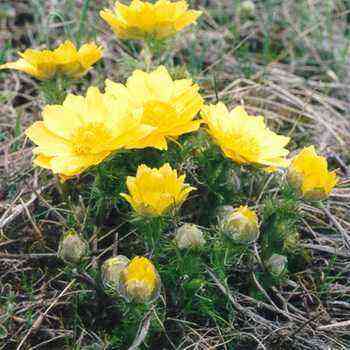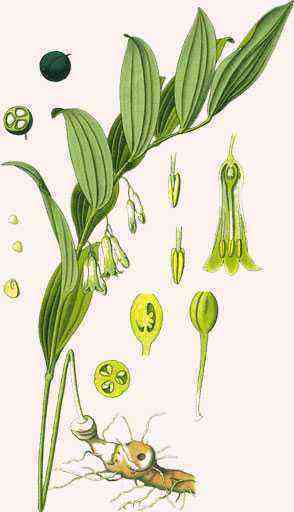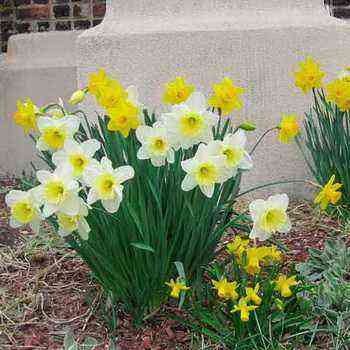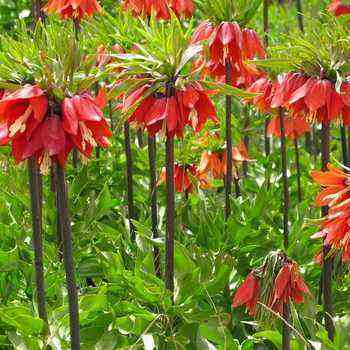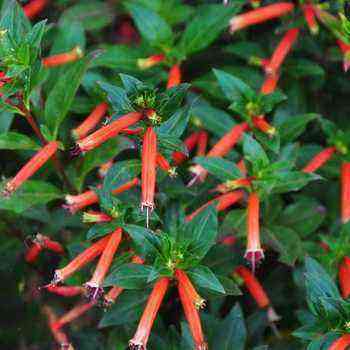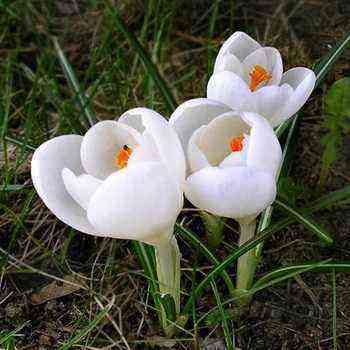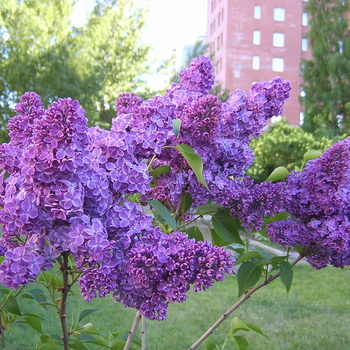
Europeans got acquainted with lilacs in the 16th century, and in Russia it appeared only in the second half of the 18th century. But lilacs miraculously “captured the whole soul” (N. Zabolotsky) of the Russian people, they quickly became familiar in our gardens and parks. And every Russian gardener will agree with the words of N. Rylenkov: “But no matter how much lilac blooms for us, we are waiting for a new bloom as a gift.”
In this article, we will talk about the different types of lilacs, give a description of the varieties of lilacs – both rare and common in our latitudes. You can also get advice on planting and growing lilacs, pruning lilacs in the garden, find out when lilacs bloom, and, of course, admire beautiful photos of lilacs.
Lilacs in the garden
Lilacs are sold rooted and grafted. Own-rooted can be obtained vegetatively and grown in vitro (microclonal method). It is best to purchase self-rooted seedlings, propagated in the old fashioned way (vegetatively). With microclonal reproduction, despite the advertising of this technology, mutations, chromosomal abnormalities, as well as the emergence of polyploid cells, are possible, which leads to a plant that is different from the mother. Manufacturers do not carry out genetic analysis for varietal compliance of all grown material, since then the cost of plants will become too high. This leads to the fact that you are buying a pig in a poke. It is worth noting the fact that in some cultivars such deviations during microcloning occur quite often. Thus, the popular A.
Lilacs are planted on p. ordinary, p. Hungarian and privet. Grafted lilacs have disadvantages. Grafting on Hungarian lilac is short-lived, since in many varieties, after a few years, the scion is rejected. Another problem is that you have to constantly struggle with the overgrowth, otherwise the rootstock will “clog” the grafted variety and the lilac will “be reborn”, as some “competent” gardeners say. And finally, the bush has one main shoot, so the plant does not rejuvenate and the lifespan becomes noticeably shorter. But on the other hand, in small gardens you have a fairly compact plant.
A very decorative shrub grafted on a stem. Now some nurseries offer a “bouquet” tree lilac, when several varieties are grafted at once. But it makes sense to inoculate one or three tonal color-matched flower brushes, otherwise the “tree” will look like an “exhibition” of lilacs.
Own-rooted lilacs and lilacs grafted onto common lilacs should be planted without deepening the root collar. Lilacs grafted onto common lilacs are recommended to be planted on a small mound, since it is believed that the common lilac stock will give less growth. Lilacs, grafted onto Hungarian lilacs and privet, are planted, like roses, deepening the graft site by 7-10 cm. The vaccination site should be covered with sand to avoid heating. This planting contributes to the transfer of lilacs to their own root system.
Description of lilac
Lilacs (Syringa) of the Olive family (Oleaceae) are shrubs and, less often, trees that attract with beautiful flowering. And the heady aroma of many types and varieties of lilacs only adds to the charm of the bushes.


As you can see in the photo, lilac has paniculate inflorescences and simple, leathery, with pointed ends. However, you can find plants with dissected and even feathery leaves. In autumn, they do not change color, remaining green until they fall off.
Types and varieties of lilac
In our gardens, varieties of s. ordinary (S.vulgaris) and interspecific hybrids obtained with its participation, such as with. hyacinthous (S. x hyacinthiflora), p. Chinese (S. x chinensis) and s. persian (S. x persica), hybrid with. Afghan and s. fine-cut (S. alghanica x S. laciniata). Chinese lilac and s. Persian in central Russia in winter they often freeze slightly, and in severe winters they can freeze out.
To date, a huge number of lilac varieties have been bred, but breeders continue to delight us with new products. The greatest contribution to the selection of lilac flowers was made by the father and son of Lemoine, whose varieties still form the basis of the assortment of this culture. Our compatriot A. Kolesnikov, whose varieties have received international recognition, did a lot for this.
Varieties are primarily distinguished by color, dividing them into 7 groups: I – white, II – purple, III – bluish, IV – purple, V – pinkish, VI – magenta (red-purple), VII – purple. Also, the varieties differ in the doubleness and shape of the flower, the size and shape of the inflorescences-panicles, in the aroma of flowers and, of course, in the size and shape of the bushes. Therefore, any gardener will be able to find a variety that will not leave him indifferent.
Photos of common lilac varieties with descriptions
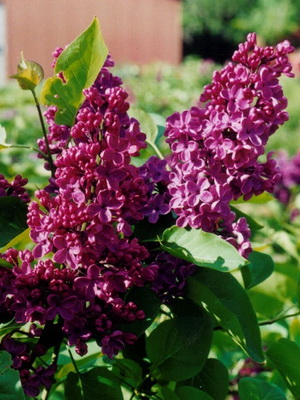
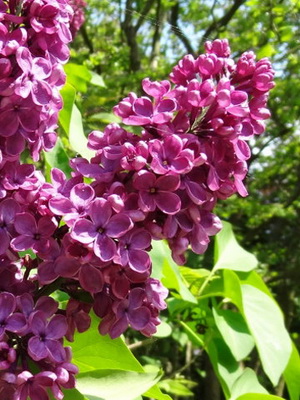
Lilac “Andenken an Ludwig Spath” ( “Andeken en Ludwig Shpet”) often found under the title “Memory Ludwig Shpet”. Inflorescences are dark purple-purple, flowers are large, simple, fragrant. Bushes are tall, straight. One of the most popular dark-colored varieties among gardeners.
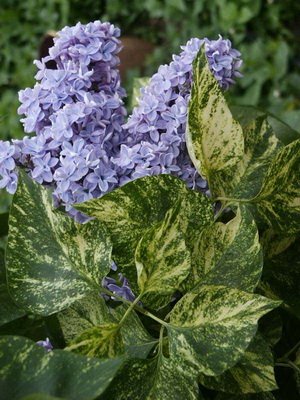

Lilac “Aucubaefolia” (“Aucubafolia”) – the variety is distinguished by unusual foliage. Pay attention to the photo of this variety of common lilac – each leaf is painted with golden yellow dots and stripes, resembling the leaves of the Japanese aucuba. It blooms with fragrant large inflorescences of semi-double lilac-blue flowers. Bushes up to 3 m high.

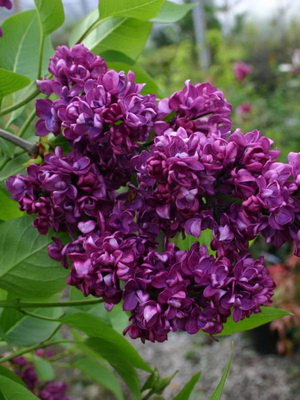
Grade lilac «of Charles Joly ‘ (« Charles Joly’) – inflorescence violet-purple with cherry saturation, consisting of large double flowers. Tall bush.

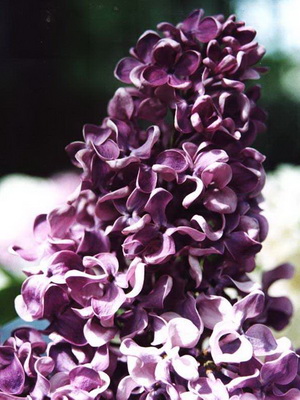
Lilac variety “Condorcet” (“Condorcet”) – purple-pink buds open into large double flowers of lilac color. A very popular variety. Bushes 2.5 m high.
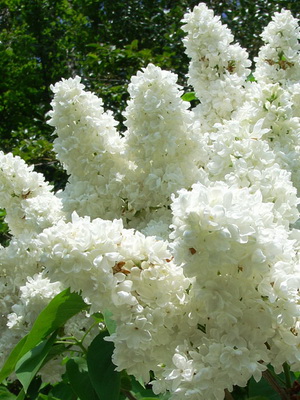
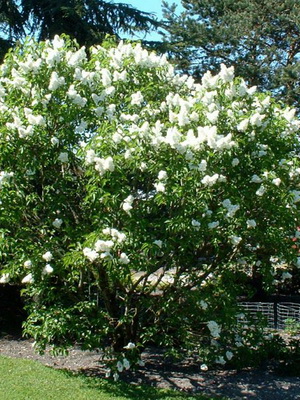
Lilac “Madame Lemoine” (“Madame Lemoine”) – an ageless variety of the XIX century breeder V. Lemoine, still conquering with snow-white inflorescences of terry fragrant flowers. Bushes are upright, tall.
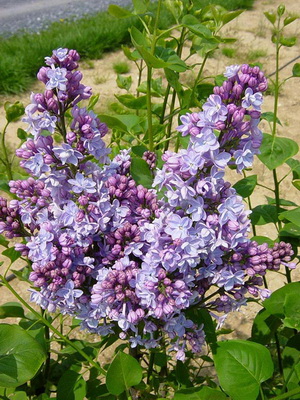

Variety “Michel Buchner” (“Michel Buchner”) – purple-purple buds open in medium double bluish-purple fragrant flowers. The inflorescences are dense. Bushes are dense, of medium height.
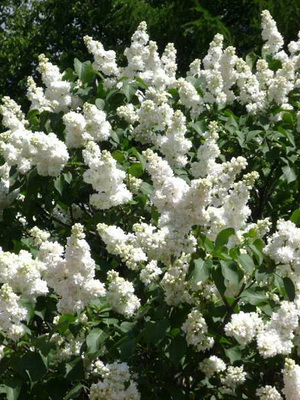
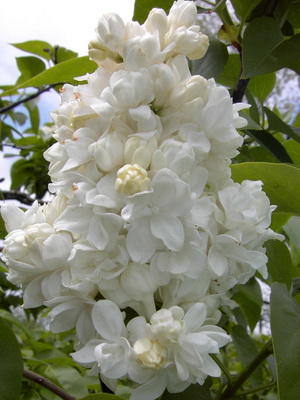
“Monique Lemoine” (“Monique Lemoine”) . Like the wine in the photo, this is a variety of common lilac with snow-white panicles, consisting of large, double flowers with pointed petals. The bushes are medium-sized. One of the last masterpieces of the Lemoines.
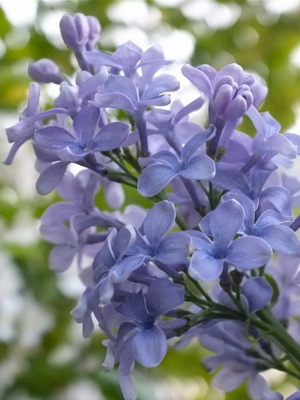
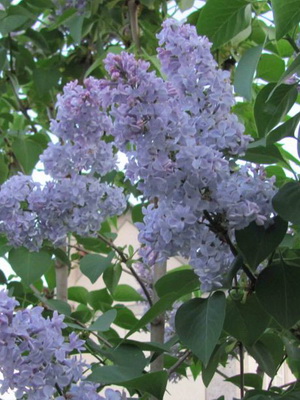
Lilac “President Grevy” – blooms profusely. In large inflorescences collected simple and semi-double flowers of lilac-blue color with a distinct blue. Bushes are tall. The variety is sometimes mistakenly marketed under the name “Condorcet”.
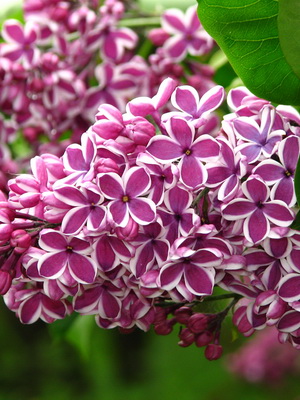
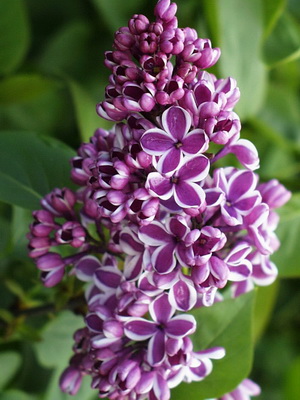
Lilac «the Sensation” ( «Sensation”) – a unique variety of contrasting color. Simple large purple-red flowers have a clear white border around the edges of the petals. To admire this contrast, the bushes should be planted near the paths or cut into bouquets, from a distance this inflorescence becomes ordinary. The bushes are vigorous.
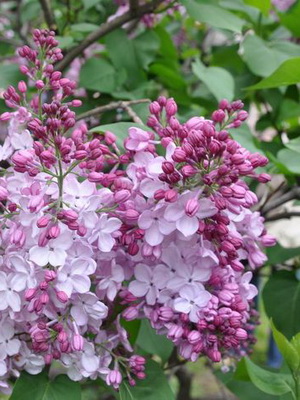

Lilac variety “ Gortenziya” – large inflorescences of simple lilac-pink flowers resemble panicle hydrangea inflorescences, for which the variety got its name. The bushes are vigorous.

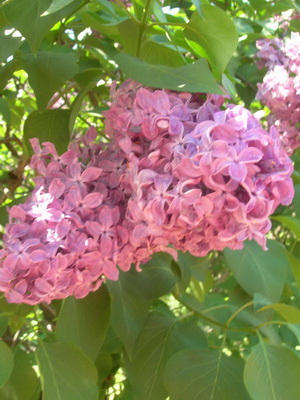
Lilac “India” (“Indiya”) attracts purple-purple with a reddish tinge inflorescence of large simple flowers. Bushes of medium height, up to 2.5 m.
The list of lilac varieties from the photo cannot but be supplemented by the unusually beautiful variety “Olimpiada Kolesnikova”:

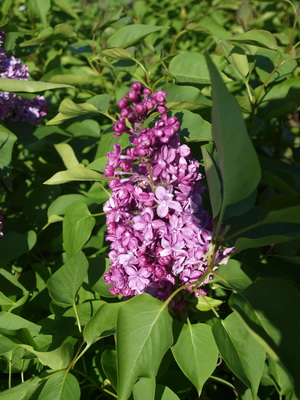
Its purple-purple buds set off double pale lilac-pink flowers. Inflorescences are acute pyramidal. Bushes of the “Olympiada Kolesnikova” variety reach a height of more than 3 m.
Lilac flower “Beauty of Moscow”
“Beauty of Moscow” (“Krasavitza Moskvy”) – this variety of A. Kolesnikov seeks to have almost every grower. Each mauve bud blossoms into a fragrant, pearlescent white double lilac flower, reminiscent of a polyanthus rose.
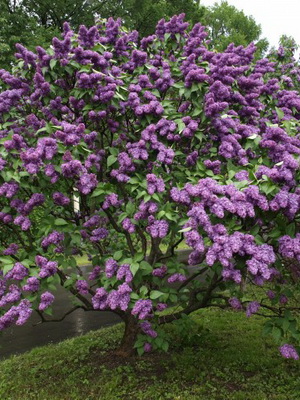
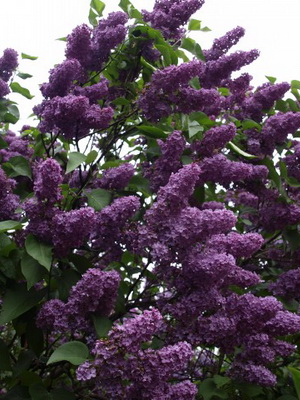
“Beauty of Moscow” is a bush of medium height and extraordinary decorativeness, which will decorate any household plot, will become the pride of the most exquisite landscape composition.
Hungarian lilac and its photo
Flowering varieties with. The common Hungarian lilac (S. josikaea) continues – a large shrub or small tree up to 5 m high. It is also a favorite of old Russian gardens.
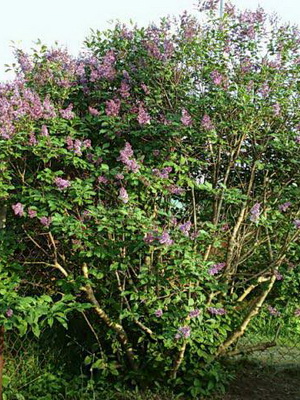
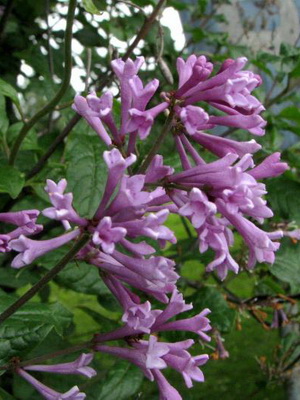
As you can see in the photo, Hungarian lilac blooms profusely with wide-pyramidal large inflorescences of small purple-lilac flowers with a specific aroma (when planting, it must be borne in mind that some people are allergic to this smell).
Where to buy Hungarian lilacs
You can buy Hungarian lilacs in nurseries that sell seedlings of garden trees and shrubs. The color of the flowers of this type of lilac varies from pale white to bright saturated.

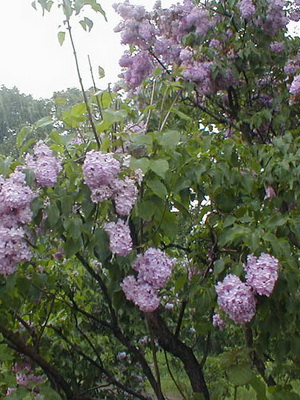
The following garden forms of Hungarian lilac are most common: pale (f. Pallida) with pale purple flowers and red (f rubra) with reddish purple flowers. The plant is very unpretentious and winter hardy. It grows very quickly.
Photo of Preston lilac flowers with a description
Following with. various varieties of Preston lilac (S. x prestoniae), bred in Canada by Isabella Preston by crossing with s. drooping and with. hairy (S. reflexa x S. villosa). Later, different breeders worked with plants of this species, significantly increasing their range. We often call this species “Canadian”.
It is a shrub (up to 3.5-4 m) with broadly ovate pointed large leaves, sometimes pubescent.
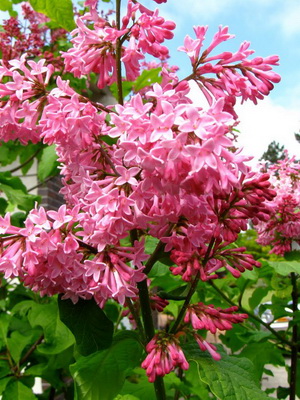

Pay attention to the photo of Preston lilac flowers – these are openwork inflorescences, mostly lavender-pink. During flowering, the trees are often visited by butterflies. Young shrubs require regular corrective pruning to form an upright shrub. Lilac Preston is unpretentious and hardy.
You can also note the varieties:
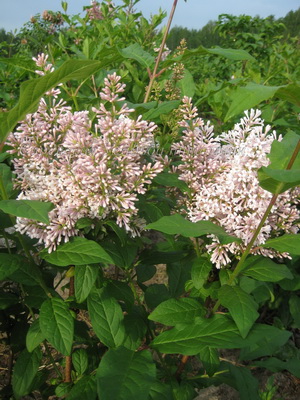
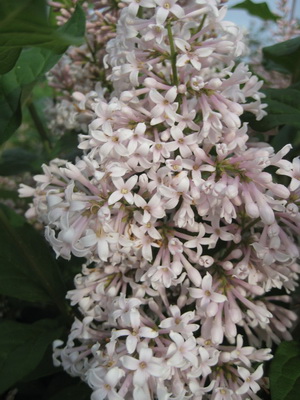
Lilac “Agnes Smith” (“Agnes Smith”) – simple tubular flowers of pure white color collected in dense brushes. It blooms very profusely. The height of the shrub is 2-2.5 m.
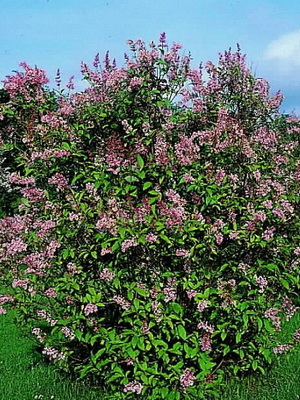
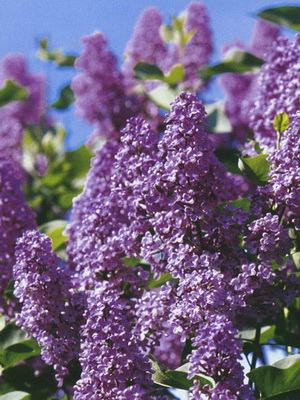
Lilac variety “Elinor” (“Elinor”) – a very noticeable contrast of dense crimson-red buds and pale lilac-pink fragrant flowers. Abundant flowering. The bush is 2.5-3.5 m high.
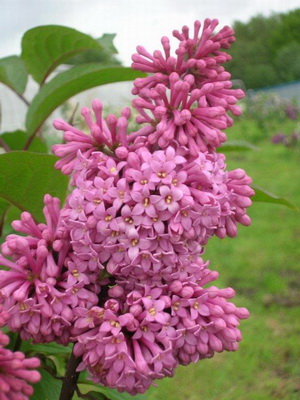
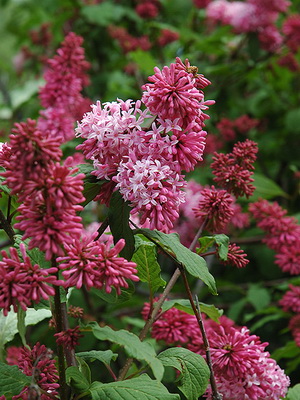
Lilac “Hiawatha” (Tayawata “) – dense raspberry-pink, simple fragrant flowers form dense panicles. Blooms profusely. Bush up to 2-2.5 m.
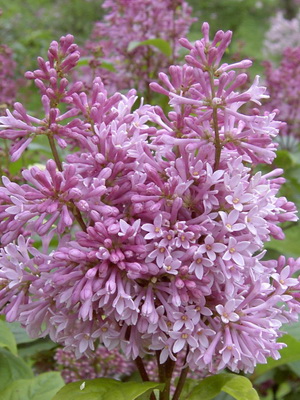
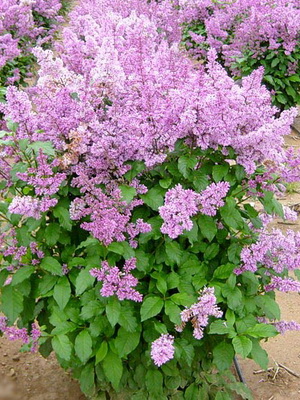
Lilac variety “Minuet” (“Minuet”) – flowers are light lavender, then purple with a reddish tint, with a slight aroma. It blooms very profusely. The height of the bush is up to 2 m.
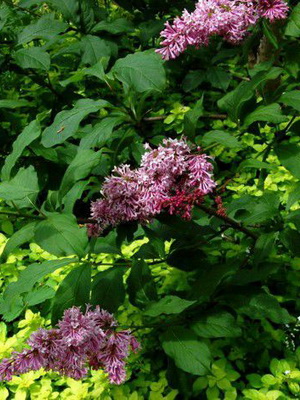
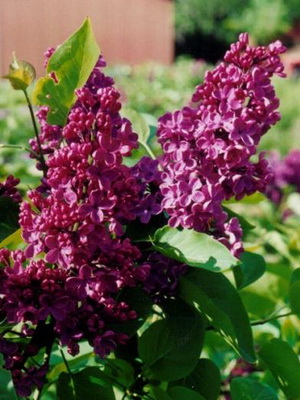
Variety “Redwine” (“Redwine”) has a rich wine-purple color of inflorescences. The aroma is spicy. Blooms profusely. The bush is high, up to 3.5 m.
Photo of Amur lilac with a description
The flowering of lilacs is completed by the still undeservedly little widespread Amur lilac (S. amurensis). Some researchers distinguish it and some other species into a separate genus Ligustrina, or Treskuna (Ligustrina), since their flowers are more similar to the flowers of plants from the genus Ligustrum.
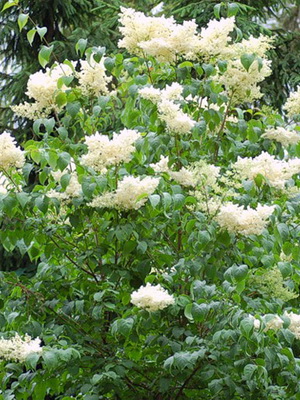
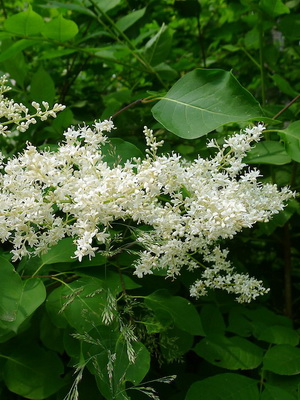
As you can see in the photo, Amur lilac is a multi-stemmed tree or a large shrub with a spreading dense crown, in culture up to 6-8 m high. The leaves resemble the leaves of c. ordinary, but unlike it, in the fall, they are painted in orange-yellow or purple tones. It blooms profusely with large wide paniculate inflorescences of small white or slightly creamy flowers with a honey smell. Grows well in well-moisturized rich soil. Winter hardiness. Its variety “Ivory Silk” (“Ivory Silk”) is often found on sale, which is characterized by greater compactness and more noticeable aroma.
Very similar in description to the Amur lilac s. Japanese (S. japonica), which some botanists distinguish as an independent species. It is distinguished by the even larger size of the bush, leaves and inflorescences, as well as later flowering.
The summer blooming s. Deserves a mention. Meyer (S. meyeri), which will easily find a place even in a small garden. It is a compact shrub with fine, graceful foliage up to 1.0-1.2 m high. The most common variety of this lilac is “Palibin”, which blooms profusely with pink-lilac inflorescences.
When the lilac tree blooms
Blooming lilacs opens with. hyacinthous in early to mid-May, the flowers of which are similar to those of c. ordinary, but inflorescences are smaller and friable. Particularly attractive is its double form (f. Plena) with fragrant bluish-lilac flowers in large panicles.

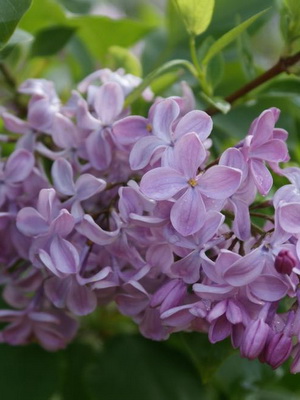
Popular varieties “Buffon” (“Buffon”) with simple large fragrant light purple flowers with a pink tint and “Ester Staley” (“Esther Staley”) with simple fragrant purple-red flowers.
Blooming common lilac
After faded with. Siacinto is colored, blooming varieties of common lilacs, filling the garden with magical pastel colors. To highlight some of the most interesting varieties of common lilac is a thankless task, since hundreds of them deserve attention. We will mention only a small part of the most unusual or most common ones.
How to plant lilacs
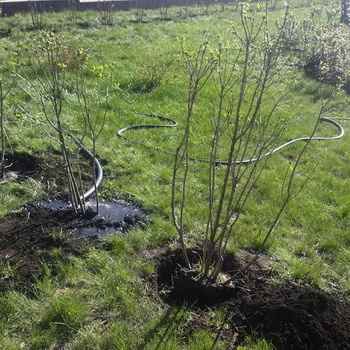 Lilacs are planted in open, sunny places, protected from the winds. The place should be well-drained and not flooded in early spring when the snow melts and in autumn with incessant rains. Even a short stagnation of water can cause the death of young roots.
Lilacs are planted in open, sunny places, protected from the winds. The place should be well-drained and not flooded in early spring when the snow melts and in autumn with incessant rains. Even a short stagnation of water can cause the death of young roots.
Lilac is unpretentious, but it gives abundant flowering on loose fertile weakly acidic or neutral soils with a high humus content. Acidic soils should be limed. Heavy clay soils need to be improved by adding humus and sand. Drainage is required when groundwater is located close.
Before planting lilacs, humus or compost and superphosphate are introduced into the planting pits. On clay soils, sand is added. On acidic soils, dolomite flour is added to neutralize, the pH of the substrate should be 6.5-7.0.
When to plant lilacs
It is best to plant lilacs in August, because in spring its buds swell very early, and with swollen buds, the lilac does not tolerate transplanting. If you do not know when to plant lilacs, but have planting material in containers, then planting can be done at any time. But in our market there is a danger of acquiring lilacs that have just been dug up and planted in a pot. In this case, the seedling will most likely not take root.
Lilac is unpretentious and drought-resistant, but during growth, budding and flowering, plants are watered for growth and abundant flowering, especially if the weather is dry. In August, watering is not carried out so as not to stimulate the awakening of the kidneys and their premature growth.
In the year of planting, lilacs do not need feeding. From the second or third year, in the growth and budding phase, a complex mineral fertilizer with microelements is applied. Lilac is responsive to organic fertilizers, such as mullein infusion with superphosphate. At the end of August – September, phosphorus-potassium fertilizer or ash is applied every two years.
Pruning lilac bushes and video of the process
In the first years after planting, the plant grows weakly and the lilac does not need pruning. Then a bush should be formed, leaving 5-10 of the most well-located skeletal branches.
Having carefully watched the video of the process of pruning lilac bushes, you noticed that the shoots are not shortened so as not to lose flowering, but only the thickening shoots are cut out “on the ring”. Pruning is done in early spring before the buds awaken.
For bouquets, it is useful to cut up to a third of flowering shoots, which stimulates the formation of new lateral branches on which flower buds are laid. From here came the omen that for abundant flowering, lilacs should be broken off into bouquets. But this should not be done, as uneven “breaks” can become a source of infection with diseases and pests. The inflorescence is cut with a sufficiently long peduncle for one- or two-year-old wood without hemp. In grafted lilacs, the shoots are removed constantly.
In gardens, lilacs are planted in informal living hedges. In old gardens, it was often located near a house, gazebo, or resting place.
In large flower gardens, lilacs can also serve as a decorative backdrop. It goes well with ornamental plants blooming at the same time: with spring-blooming white-flowered spireas, with very early, May varieties and types of herbaceous peonies and for sophisticated gardeners with early tree-like peonies. From perennials, you can use a swimsuit, early aquilegia, magnificent dicentra. Good in the vicinity of lilac clumps of tall late tulips and Aflatunian and giant bows.
